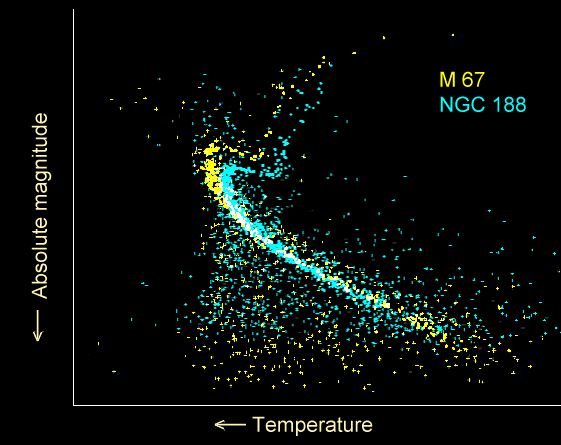We all come from somewhere. If you wind the clock back far enough, we all come from the same place. Sometime about 4.5 billion years ago, the sun was born, and a disk of debris swirling around it soon coalesced into Earth and the rest of the planets. But where did that happen? Where was the sun born?
http://blogs.scientificamerican.com/obs ... continues/
My Question. Did the spiral in our galaxy have a hidden unseen reason. Was the gravity at the center of our galaxy really stronger at some point that makes it looks like it does ? If So, Could our sun have another point of creation ?
if Not..... Explain the spiral Please.....
Regards
tc
Where Did the Sun Come from? The Search Continues
-
The Code
- 2+2=5
- Posts: 913
- Joined: Sat Mar 07, 2009 6:39 pm
- AKA: Swainy
- Location: The Earth, The Milky Way, Great Britain
Where Did the Sun Come from? The Search Continues
Always trying to find the answers
- neufer
- Vacationer at Tralfamadore
- Posts: 18805
- Joined: Mon Jan 21, 2008 1:57 pm
- Location: Alexandria, Virginia
Re: Where Did the Sun Come from? The Search Continues
The Code wrote:
Did the spiral in our galaxy have a hidden unseen reason. Was the gravity at the center of our galaxy really stronger at some point that makes it looks like it does ? If So, Could our sun have another point of creation ?
if Not..... Explain the spiral Please.....
http://en.wikipedia.org/wiki/Spiral_galaxies wrote:<<The first acceptable theory for the spiral structure was devised by C. C. Lin and Frank Shu in 1964. They suggested that the spiral arms were manifestations of spiral density waves, they assumed that the stars travel in slightly elliptical orbits, and that the orientations of their orbits is correlated i.e. the ellipses vary in their orientation (one to another) in a smooth way with increasing distance from the galactic center. This is illustrated in the diagram. It is clear that the elliptical orbits come close together in certain areas to give the effect of arms. Stars therefore do not remain forever in the position that we now see them in, but pass through the arms as they travel in their orbits.>>
Art Neuendorffer
- neufer
- Vacationer at Tralfamadore
- Posts: 18805
- Joined: Mon Jan 21, 2008 1:57 pm
- Location: Alexandria, Virginia
Re: Where Did the Sun Come from? The Search Continues
The Code wrote:
We all come from somewhere. If you wind the clock back far enough, we all come from the same place. Sometime about 4.5 billion years ago, the sun was born, and a disk of debris swirling around it soon coalesced into Earth and the rest of the planets. But where did that happen? Where was the sun born?
http://blogs.scientificamerican.com/obs ... continues/
http://en.wikipedia.org/wiki/Messier_67 wrote:
<<Messier 67 (also known as M67 or NGC 2682) is an open cluster in the constellation of Cancer. It was discovered by Johann Gottfried Koehler in 1779. Age estimates for the cluster range between 3.2 and 5 billion years, with the most recent estimate (4 Gyr) implying stars in M67 are younger than the Sun. Distance estimates are likewise varied and typically range between 800-900 pc. M67 is not the oldest known open cluster, but there are few Galactic clusters known to be older, and none of those are as close as M67. M67 is an important laboratory for studying stellar evolution, since the cluster is well populated, obscured by negligible amounts of soot, and all its stars are at the same distance and age, except for approximately 30 anomalous blue stragglers, whose origins are not fully understood.
M67 is the nearest old open cluster, and thus has become a standard example for studying stellar evolution. It is probably the second best observed open cluster after the Hyades cluster, which is amongst the nearest open clusters and younger than M67. M67 is one of the most-studied open clusters, yet estimates of its physical parameters such as age, mass, and number of stars of a given type, vary substantially. Richer et al. estimate its age to be 4 Gyr, its mass to be 1080 solar masses, and the number of white dwarfs to be 150. Hurley et al. estimate its current mass to be 1400 solar masses and its initial mass to be approximately 10 times as great.
M67 has more than 100 stars similar to the Sun, and countless red giants. The total star count has been estimated at well over 500. The ages and prevalence of Sun-like stars contained within the cluster had led astronomers to consider M67 as the possible parent cluster of our own Sun. However, computer simulations have suggested that this is highly unlikely to be the case. The cluster contains no main sequence stars bluer than spectral type F, other than perhaps some of the blue stragglers, since the brighter stars of that age have already left the main sequence. In fact, when the stars of the cluster are plotted on the Hertzsprung-Russell diagram, there is a distinct "turn-off" representing the stars which have terminated hydrogen fusion in the core and are destined to become red giants. As the cluster ages, the turn-off moves progressively down the main sequence.
It appears that M67 does not contain an unbiased sample of stars. One cause of this is mass segregation, the process by which lighter stars (actually, systems) gain speed at the expense of more massive stars during close encounters, which causes the lighter stars to be at a greater average distance from the center of the cluster or to escape altogether.>>
Art Neuendorffer
- Chris Peterson
- Abominable Snowman
- Posts: 18597
- Joined: Wed Jan 31, 2007 11:13 pm
- Location: Guffey, Colorado, USA
- Contact:
Re: Where Did the Sun Come from? The Search Continues
How would you even go about defining a coordinate system that was stable with time in a fluid galaxy?The Code wrote:We all come from somewhere. If you wind the clock back far enough, we all come from the same place. Sometime about 4.5 billion years ago, the sun was born, and a disk of debris swirling around it soon coalesced into Earth and the rest of the planets. But where did that happen? Where was the sun born?
All you can really talk about is what other bodies might have been neighbors of our system when it was formed. But since everything in the galaxy is moving, and nothing is following exactly the same path, there's a natural scrambling of position over time. We may never identify another object that formed from the same stellar nursery as the Sun. That information may be hopelessly lost.
Chris
*****************************************
Chris L Peterson
Cloudbait Observatory
https://www.cloudbait.com
*****************************************
Chris L Peterson
Cloudbait Observatory
https://www.cloudbait.com
- rstevenson
- Quis custodiet ipsos custodes?
- Posts: 2705
- Joined: Fri Mar 28, 2008 1:24 pm
- Location: Halifax, NS, Canada
Re: Where Did the Sun Come from? The Search Continues
I seem to recall, perhaps last year and perhaps posted here, there was some work being done to try to identify stars that may have formed in the same cloud of material from which our Solar System formed. They thought there were some good candidate stars very similar to our own Sun and not too far away. (Can't recall if they were using spectrographic analysis or something else to define "similar".) The work was at that point inconclusive though.Chris Peterson wrote:All you can really talk about is what other bodies might have been neighbors of our system when it was formed. But since everything in the galaxy is moving, and nothing is following exactly the same path, there's a natural scrambling of position over time. We may never identify another object that formed from the same stellar nursery as the Sun. That information may be hopelessly lost.
I'll see if I can track down a reference.
Rob
- Chris Peterson
- Abominable Snowman
- Posts: 18597
- Joined: Wed Jan 31, 2007 11:13 pm
- Location: Guffey, Colorado, USA
- Contact:
Re: Where Did the Sun Come from? The Search Continues
Yes, there was a report about that, and it was discussed here. But the conclusions were highly speculative, and I believe that even the authors admitted that the results would probably remain permanently inconclusive.rstevenson wrote:I seem to recall, perhaps last year and perhaps posted here, there was some work being done to try to identify stars that may have formed in the same cloud of material from which our Solar System formed. They thought there were some good candidate stars very similar to our own Sun and not too far away. (Can't recall if they were using spectrographic analysis or something else to define "similar".) The work was at that point inconclusive though.
Chris
*****************************************
Chris L Peterson
Cloudbait Observatory
https://www.cloudbait.com
*****************************************
Chris L Peterson
Cloudbait Observatory
https://www.cloudbait.com

